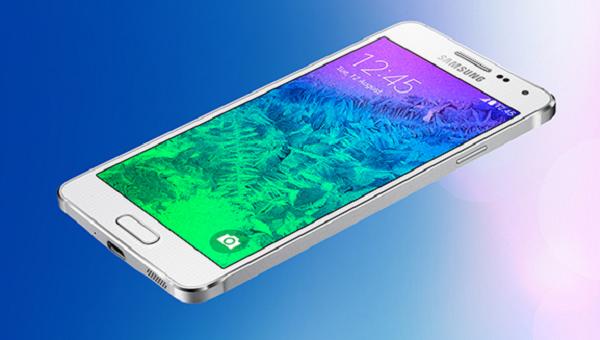Last Updated on January 25, 2019 by Mathew Diekhake
Few phones in the Samsung range come with a more attractive press shot than the Galaxy Alpha. We knew for months in the lead up to the Alpha’s release that is was coming as heavy indicators suggested Sammy wanted a premium S5 variant. That wasn’t true as it turns out because the Alpha comes with less specs than the original Galaxy S5. It does, however, come with the metal finish around the edges and marks the first phone from Samsung to step away from the plastic finish.
If you’ve had enough of the stock Android 4.4.4 KitKat that Alpha come out of the box with, you may have viewed several articles from out site that uses a factory reset, or at least recommends applying the reset if you get stuck. You see, a factory reset restores the smart phone back to its original form how it was before you purchased the device. That means without any of your data. I know, scary thought isn’t it? So long as you backup the handset, there’s no reason for you to lose any data. These days you’ll find the stock backup utility from Android operating system far easier and you have application available from the Google Play store which help you make copies of just about everything you could image.

There are many modes any Android smart phone can start the bootloader in. There is Upload Mode, Download Mode, charging mode, recovery mode and the normal mode which we all know as the usual booting process. Each mode works for different reasons. We aren’t explaining each different mode here because that will confuse you. However, we are explaining every detail about the resetting process.
There is little difference between a factory reset and a hard reset. Essentially they both do the same thing: wipe all the data and force the user into starting with a clean OS where they must enter the account details including email and passwords again. The one difference is the way you do it. You can press button combinations for a hard reset or enter recovery mode where you start the factory reset. Android didn’t come out publicly and explain why the use of two different names. Anyhow, we’ll show you both ways of applying the reset.
Make sure you backup any data you don’t want to lose. Data examples include your phone contacts, videos, pictures, music, SMS text messages and the Settings. As I said before, everyone has their own way they like to back up. Samsung has the Samsung Kies utility which allows users to connect their phones or tablet to the Windows PC and sync the device. It is also handy for installing the latest USB drivers just by one click of the button. There are other ways of backing up such as installing official apps from the Google Play Store. Helium is really popular with the Android crowd. Other options include Easy Backup, G Cloud Backup and SMS Backup plus.
How to back up the Galaxy S5
- Turn on the mobile.
- Tap the application icon from the home screen.
- Open the Settings app by tapping the icon.
- Open the “General” tab, followed by “backup and reset.”
- Enable the “back up my data” and “Automatic restore” option.
- Proceed to settings up the Google account if you don’t have one already.
- Hard Resetting from the Settings:
How to Hard Reset from Settings
- Turn on the mobile.
- Open the menu option from the home screen.
- Tap the Settings icon.
- Tap in the general tab.
- Tap the backup and restore.
- Tap on the option that says “Reset.”
- Agree to the terms and conditions.
- It takes some minutes for the reset to be applied.
- Upon reboot your phone is completely wiped.
Apply the Factory Reset from Recovery:
- Turn off the phone.
- Boot it up by pressing Volume Up + Power + Home keys.
- You are now entering recovery mode.
- Pick the “wipe data factory reset” option.
- Agree to the terms and conditions.
- The same waiting process applies.
Applying the reset using apps
- Download the “Factory Reset Mate” app.
- Wait for the installation to complete on your display.
- Click the app icon.
- Follow the on-screen instructions.
Option 2:
- Download the Simple Factory Reset app from the Google Play store.
- Wait for the download to complete. Open the new app icon.
- Tap the “Activate” button.
- Tap the “Reset” button.
Remember: there are often solutions to your problems that don’t need a full factory reset where you are starting the phone from scratch. However, if you can’t get out of trouble and you need to start using your phone again, applying the hard reset is what you want. You may need to send your smart phone back to the manufacturer if the reset doesn’t fix the problem. You must have a warranty or else they won’t look at the device.
